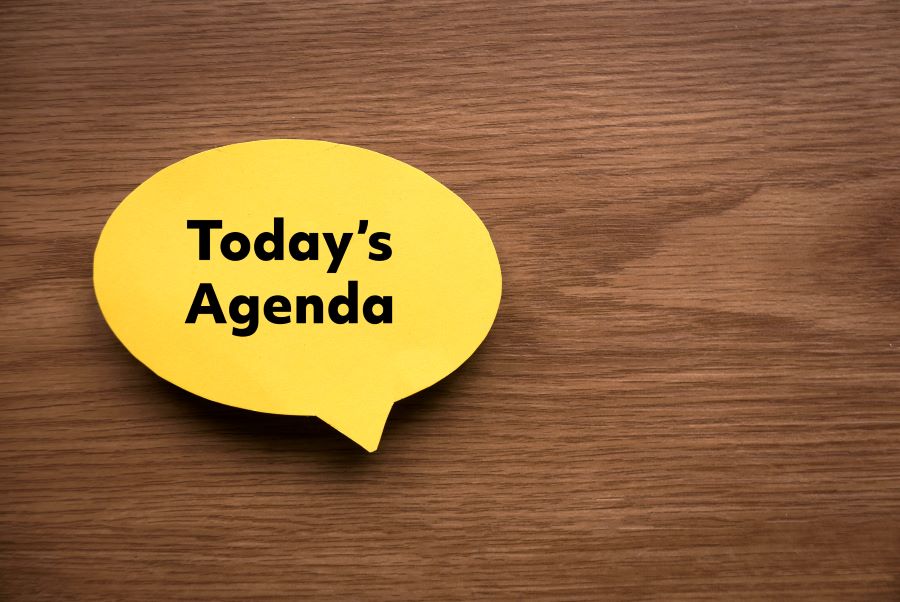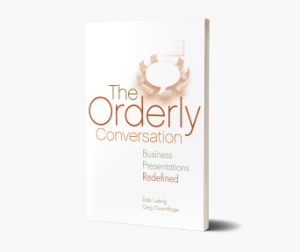
- Barbara Egel Meetings
We were in the midst of a complex, multi-part training at a Fortune 500 company, and the topic of conversation was employees being invited to meetings but having no idea why they were invited or what they were expected to contribute. One of us asked whether meeting invitations came with a topic description or a meeting goal. The room went silent. No one had ever thought to include the goal of a meeting; all they got was a vague topic area. Thus, these subject-matter experts didn’t know what from their vast quantities of information they were expected to contribute or how to best prepare and digest it to be right-sized and useful. Their corporate culture simply didn’t have specific expectations for meeting planning. Yours should.
The following guidelines apply both to ad hoc meetings and regularly recurring meetings. In fact, the latter might almost be more important because as people get comfortable assuming the flow and goals of a recurring meeting, their perceptions are likely to drift based on their own priorities and preoccupations, and soon enough, the attendees are on different wavelengths altogether.
Effective facilitators provide context
If you’ve been to one of our trainings, you know that we teach people to frame their presentations or meetings with four elements.
- Your goal: What do you, as a leader, hope to achieve with this meeting?
- The benefit to your listeners: What will they gain toward success in their jobs?
- The current situation: What real-world context does your meeting address?
- An agenda: How do you plan to spend their time wisely and well?
We’ll address the first two in a bit, but let’s look at the third one, the current situation. This is all about context. What’s the immediate opportunity or problem? What step is the organization about to take? What has people worried, happy, or confused about their work world? Too often, meetings are called with no statement of the context, confusing people about what the meeting is for and why it’s relevant to them.
Lack of context can also set a misleading emotional tone. Imagine if you received an invitation to a meeting about “Company Acquisition” with no further contextual grounding. Depending on your position (and disposition), you could be terrified that your company is being acquired, and you might lose your job. Or you might be elated that your company is acquiring another one, so there’s room for promotion. Since those interpretations can’t both be true, someone will go through emotional turmoil that honest context-setting could prevent. Even if the news is bad, it’s possible to have a productive meeting when the context and expectations are clear.
Successful meetings have a clear purpose
Once you understand and figure out a way to communicate context, set an overarching purpose or goal for the meeting, just like the goal we talk about in framing a presentation. A good way to state the purpose of any piece of work—a meeting, a research project, a training session—is to phrase it like this:
In this meeting, we will [explore/debate/decide/finalize, etc.] TOPIC in order to TAKE CONCRETE ACTION.
Here are a few examples of what we mean.
In this meeting, we will explore resource reallocation scenarios in order to draft at least three possible plans for meeting demand in the next fiscal year.
In this meeting, we will act on key insights from Lois and Hakeem regarding pain points identified in our HR onboarding process in order to create a plan for addressing them by FY 2025.
In this meeting, we will decide on which one of four distinct packaging prototypes to move forward with in order to make any minor edits needed and begin production by March 15.
Orderly meetings rely on an agenda
Even a purpose statement as focused as these doesn’t give quite enough information for attendees to know how they need to prepare and what will be expected of them. Under the purpose, list an agenda. Let’s use one of the purpose statements from above and see what the agenda might be.
In this meeting, we will decide on which one of four distinct packaging prototypes to move forward with in order to make any minor edits needed and begin production by March 15. Specifically, we will—
- Learn from Marketing Research about the qualitative research and survey findings around each of the four design options and eliminate clear losers.
- Explore the potential effects of each remaining design on brand integrity, with Sophie leading the discussion and contributing information on previous packaging changes.
- Analyze the net cost of each change from the least to most different, led by Sami and John.
- Decide on a final design.
- Draft a high-level plan for the rollout, led by LJ and Bob.
Note that there’s a verb bolded in each of these, even those that are more about learning or tossing around ideas. Starting with a verb keeps the agenda action-oriented and gives the meeting specific goals. You’ll also notice that the agenda is numbered. We recommend the use of numbers to reinforce the structure and arc of the meeting.
What you’ll gain from this approach
You may be thinking you don’t have the time for this extra planning or that people should just know what your meeting intends to do. But it will save your organization’s time and also the frustration, stress, and even embarrassment of your attendees if you give them a crystal-clear idea of what the meeting is about, why they’re attending, what’s expected of them, and how long it will take. In sum,
- The right people will be at the right meetings, prepared and ready to participate.
- There will be little or no fumbling for what to say or do next.
- Thoughtful planning leads to thoughtful timing, which means meetings accomplish their purpose and objectives in the time allotted. No more awkwardly scheduling follow-up meetings to finish the business.
- Action-oriented agendas inoculate against frustration since specific, reachable goals have been laid out.
Back to our roomful of learners stunned into silence at the thought of a meeting with a clearly stated goal: Each of the people present—especially the management-level participants—was ready to add at least an overarching goal to their meeting invitations. It won’t change the culture overnight, but their meeting attendees will walk out feeling like their time was well spent and good work got done.


